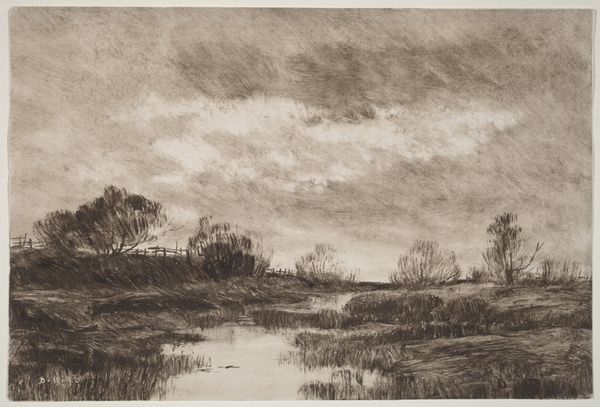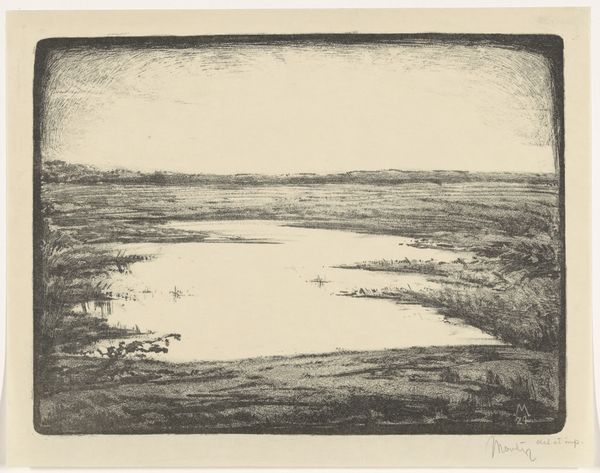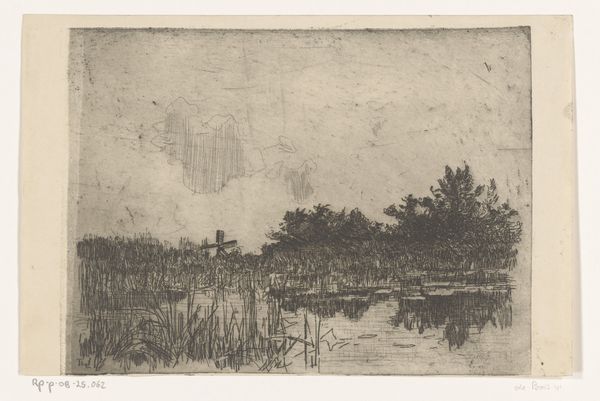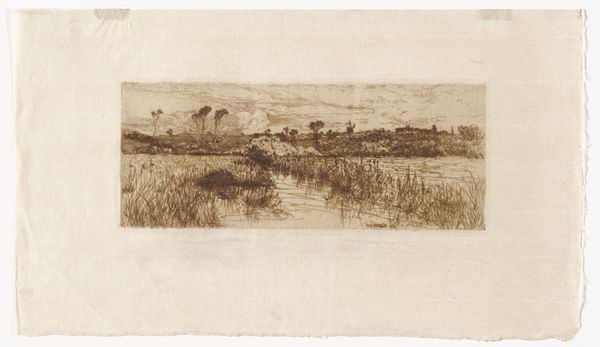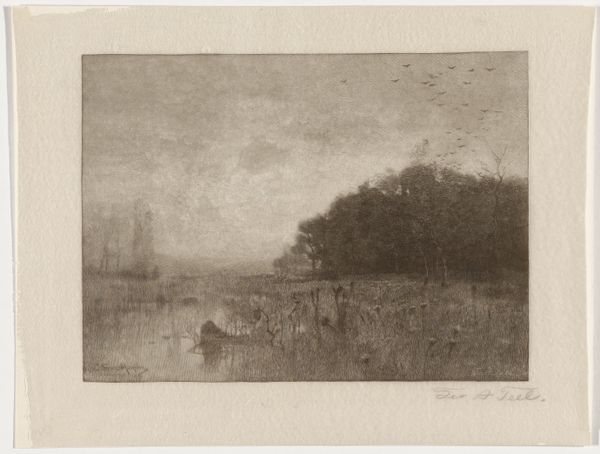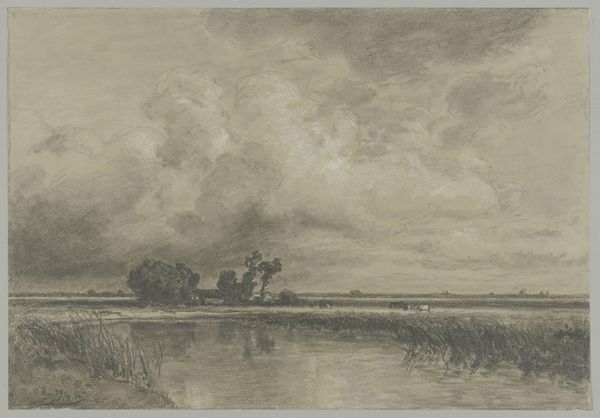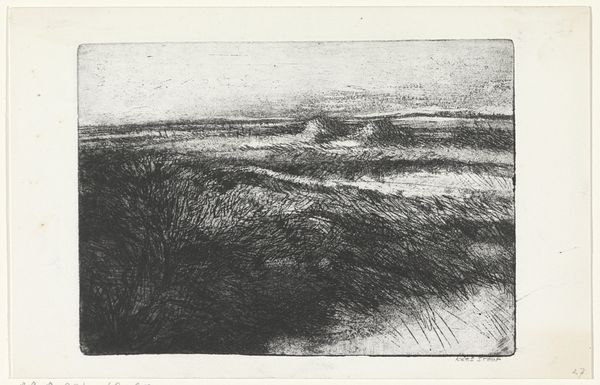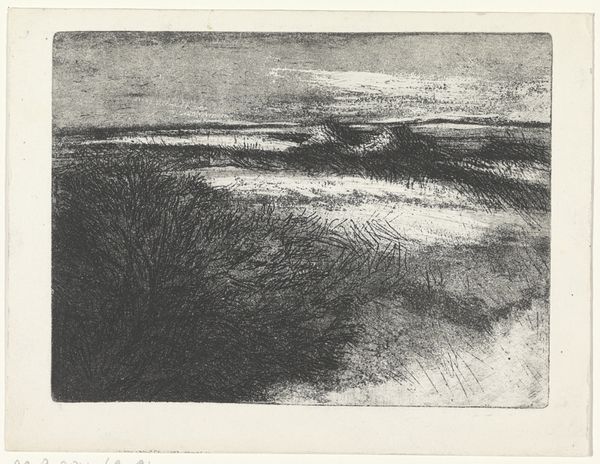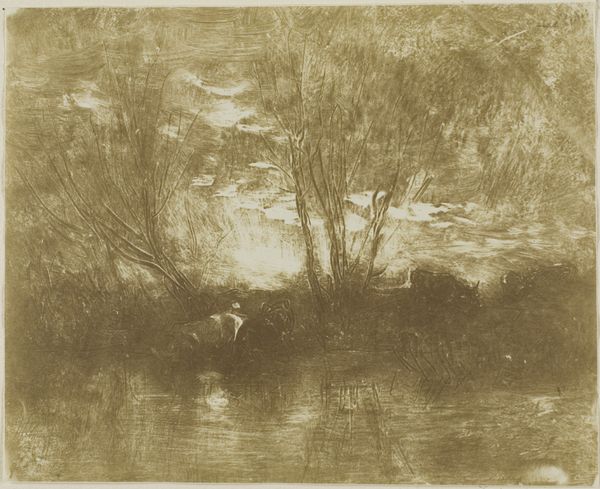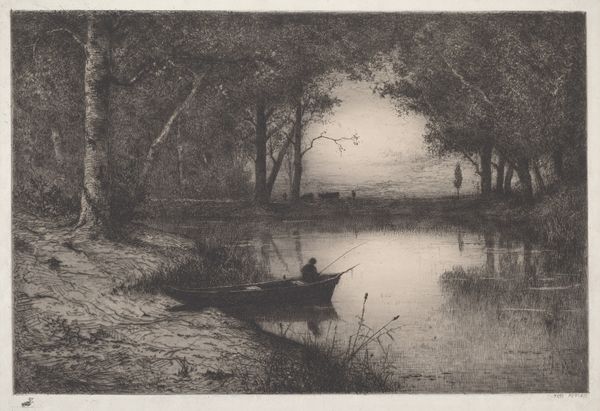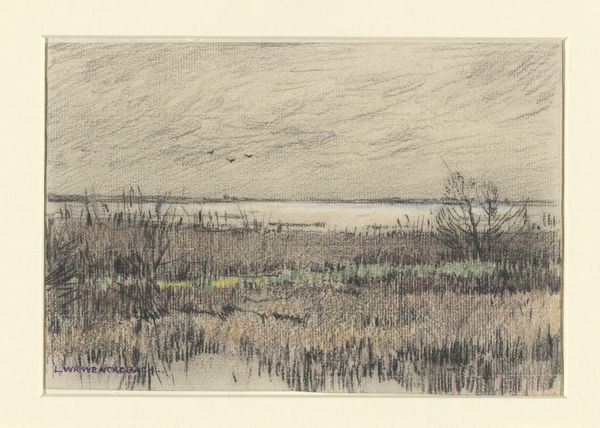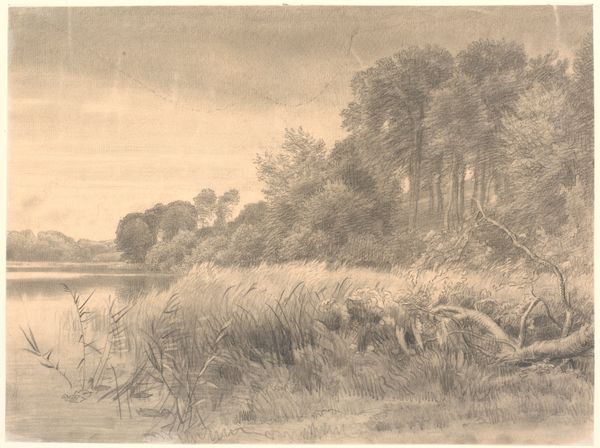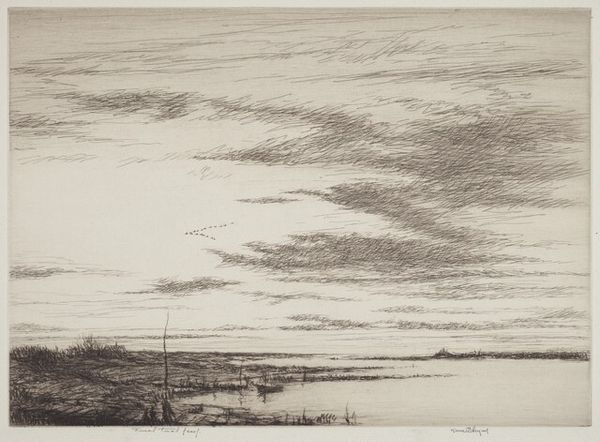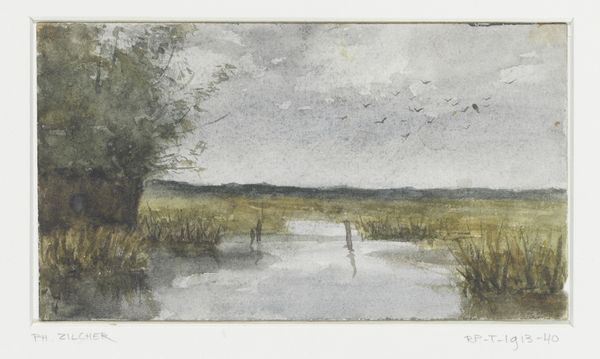
drawing
#
drawing
#
twilight
#
natural shape and form
#
snowscape
#
countryside
#
nature colouring
#
nature
#
outdoor scenery
#
nature heavy
#
mist
#
shadow overcast
Dimensions: 147 mm (height) x 220 mm (width) (bladmaal)
Editor: Here we have Anton Melbye's "Landscape with a River," a drawing from 1862, currently housed at the SMK. It’s a very muted, almost monochrome scene. It gives the impression of a bleak, cold day. What stands out to you about this particular landscape? Curator: Well, considering its materiality as a drawing, what interests me is how Melbye uses this seemingly simple medium to evoke a sense of vastness and atmosphere. It is vital to consider the means of production that constitute this "drawing". What kind of paper, what type of graphite? Consider the economic structures needed to acquire even these seemingly modest materials. And why create an ostensibly traditional landscape at all? Editor: That's a fascinating perspective. So, instead of just seeing a pretty landscape, you're looking at the conditions that made this landscape possible? Curator: Precisely! It speaks volumes about the art market of the time, about the artist's relationship to landscape as commodity. Were these images made for widespread consumption as engravings, for example? Who benefitted from its creation and distribution? Also consider how his labor here connects or differs from the agricultural or fishing workers likely active within this depiction of the land itself. Editor: So, it’s not just about what is depicted, but who it was for and how it was made. I guess I hadn’t considered that labor aspect before, especially since landscape paintings can often seem quite detached from such concerns. Curator: Absolutely. Looking at art through the lens of its material existence, its production, distribution, and consumption, provides a crucial dimension often overlooked in art historical analysis. It also lets us rethink the traditional boundary between 'high art' and perhaps more functional or commercial graphic art that disseminated these landscapes to a broader public. Editor: I'm starting to see landscapes in a totally new way now. Thanks! Curator: My pleasure. Now you might even start to consider landscape art from a pollution or toxic material standpoint. Food for thought, certainly.
Comments
No comments
Be the first to comment and join the conversation on the ultimate creative platform.
